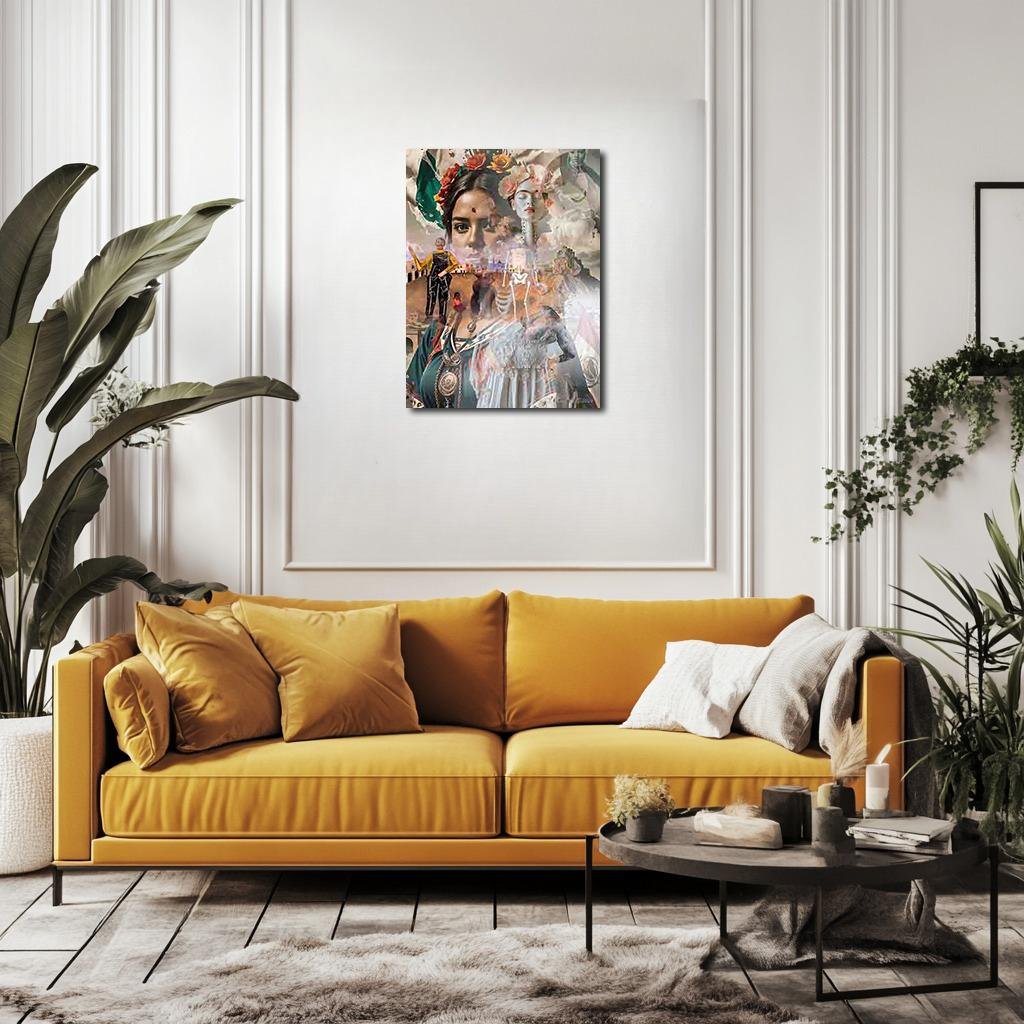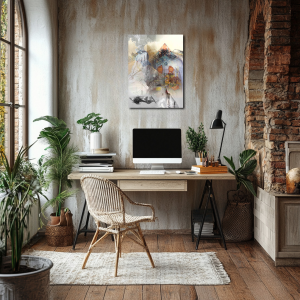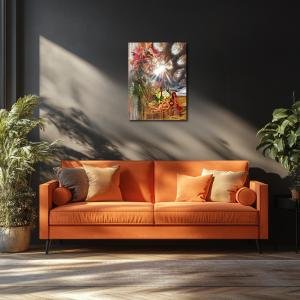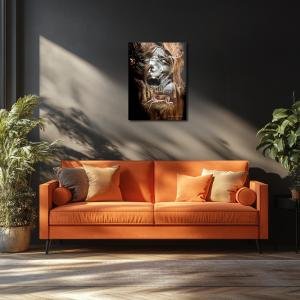Roots and Ruins: Frida’s Living Soul of Mexico
Roots and Ruins reimagines Frida Kahlo’s Four Inhabitants of Mexico as a breathing, layered vision where life, death, and history are inseparable. Centered around crowned figures embodying pride and mortality, the scene weaves earthy ochres, blood reds, emerald greens, and ghostly whites into a tender yet unflinching portrait of Mexico’s soul. Through ruins, flags, and spectral memories, the piece honors a land shaped by survival, grief, and the endless rebirth of its people.
Please see Below for Details…
Hotline Order:
Mon - Fri: 07AM - 06PM
404-872-4663
This conceptual reimagining of Frida Kahlo’s Four Inhabitants of Mexico unfolds her meditation on identity into a layered dreamscape where history, death, and cultural pride merge into one breathing, mourning, and celebratory vision. Titled Roots and Ruins , the piece reshapes Kahlo’s original tableau into a mythic gathering of past and present, binding together the living, the dead, and the eternal landscape of her beloved homeland.
At the center stands a crowned woman, her gaze steady and unflinching, wearing traditional dress adorned with roses and the green-white-red colors of the Mexican flag. Her face, soft yet commanding, evokes not only Kahlo’s spirit but the collective spirit of Mexico’s daughters—those who carry history stitched into their hair, their garments, their silent strength. Behind her floats a spectral vision of another woman: her flesh translucent, her ribs and spine exposed like the architecture of a withering cathedral. This figure does not merely suggest death—it sanctifies it, turning mortality into a tender, bridal offering to the earth itself.
Surrounding these twin embodiments of life and death swirl echoes of Mexico’s memory: a soldier wielding a rifle, a barefoot child clutching at tattered clothes, Indigenous figures rooted in parched fields. Their forms are not static illustrations but living specters, caught in a liminal dance between visibility and vanishing. They rise from the dry ground and tumble into the misty sky, as if time itself weaves them into and out of existence.
Color in Roots and Ruins is a tactile map of emotion and meaning. The foundational tones are earthy and sun-baked: ochres, rusts, and dusty siennas dominate the land, evoking the scorched valleys, ruins, and deserts of Mexico’s vast geography. These muted, grounded colors suggest both endurance and exhaustion—the slow, unbroken survival of a people who have weathered conquest, revolution, and rebirth without losing their soul.
The central female figures glow with richer, deeper hues. Their garments blaze in emerald green, blood red, and clean, hopeful white—the tricolor of the Mexican flag—wrapped not as symbols of nationalism alone, but as living fabrics of identity. These colors vibrate with personal pride, collective memory, and bittersweet mourning. The red evokes not just patriotism but spilled blood; the green speaks of fertile hope and nature’s stubborn return; the white shimmers between purity and the pale dust of forgotten bones.
The skeletal figure is veiled in pale lavenders, soft pinks, and cold whites, her ribs painted with brushstrokes of mist and fading petals. These colors evoke both beauty and desolation, suggesting that death in Kahlo’s vision is not abrupt or alien—it is woven into the very textures of celebration and survival. It lives alongside weddings, revolutions, lullabies, and prayers.
The sky transitions from a bruised, smoke-laden gray into an opening of soft sunrise peach and muted gold. This transition hints at the cyclical nature of Mexican history: from colonization to independence, from devastation to renewal. Light in this piece is not triumphant but tender—it falls across the ruins, the skeletons, the laborers with a soft blessing, acknowledging their suffering without promising easy redemption.
When I created Roots and Ruins , I wanted to honor Frida’s deep and complicated love for her homeland—not as an idealized paradise, but as a bruised, bleeding, beautiful soul. In her original Four Inhabitants of Mexico , she revealed the fractures and fusions that made up her Mexico: the Europeanized elite, the Indigenous poor, the ever-present specter of death, the child caught between broken pasts and uncertain futures. I wanted to reframe that vision into a breathing, layered world where Mexico itself becomes a living organism—wounded, radiant, and unbroken.
The compositional flow rises and falls like breath: the solemnity of the woman’s gaze grounds the viewer, while the skeletal bride lifts the eye into ethereal realms of memory and loss. Figures of soldiers and children spiral outward into dust and mist, suggesting that while history moves forward, its inhabitants never truly leave—they remain stitched into the landscape, whispering through every ruined wall and every blooming jacaranda.
Add your review
Your email address will not be published. Required fields are marked *
Please login to write review!
Looks like there are no reviews yet.








